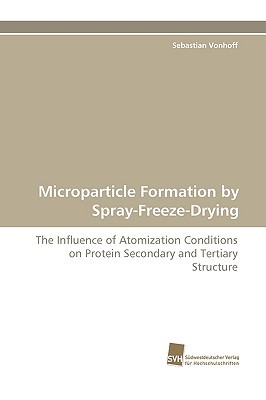
- We will send in 10–14 business days.
- Author: Sebastian Vonhoff
- Publisher: Sudwestdeutscher Verlag Fur Hochschulschriften AG
- Year: 2010
- Pages: 188
- ISBN-10: 3838117719
- ISBN-13: 9783838117713
- Format: 15.2 x 22.9 x 1.1 cm, softcover
- Language: English
- SAVE -10% with code: EXTRA
Reviews
Description
This thesis deals with the preparation microparticles by spray-freeze-drying (SFD). As the process consists of various unit operations, the stability of labile APIs, such as proteins, can be serverly impaired. The secondary structure of a protein is known to be directly linked to its overall stability. However, quantification of protein secondary structure by FTIR spectroscopy can show poor reproducibility. Therefore, the first part of this thesis covers the development of a new FTIR method for objective and fast determination of protein secondary structure. The second part investigates the influence of atomization conditions on protein secondary and tertiary structure as well as residual enzyme activity during SFD. The process is analyzed after a) atomization b) atomization, freezing and thawing and c) the complete SFD process. A thorough comparison of the utilized ultrasound nozzles (including particle size distribution, temperatures and cavitation effects) is performed in the third part of this thesis. In the fourth and last part, different formulations containing a mixture of alpha-chymotrypsin and various excipients are evaluated for their stability.
EXTRA 10 % discount with code: EXTRA
The promotion ends in 20d.21:43:34
The discount code is valid when purchasing from 10 €. Discounts do not stack.
- Author: Sebastian Vonhoff
- Publisher: Sudwestdeutscher Verlag Fur Hochschulschriften AG
- Year: 2010
- Pages: 188
- ISBN-10: 3838117719
- ISBN-13: 9783838117713
- Format: 15.2 x 22.9 x 1.1 cm, softcover
- Language: English English
This thesis deals with the preparation microparticles by spray-freeze-drying (SFD). As the process consists of various unit operations, the stability of labile APIs, such as proteins, can be serverly impaired. The secondary structure of a protein is known to be directly linked to its overall stability. However, quantification of protein secondary structure by FTIR spectroscopy can show poor reproducibility. Therefore, the first part of this thesis covers the development of a new FTIR method for objective and fast determination of protein secondary structure. The second part investigates the influence of atomization conditions on protein secondary and tertiary structure as well as residual enzyme activity during SFD. The process is analyzed after a) atomization b) atomization, freezing and thawing and c) the complete SFD process. A thorough comparison of the utilized ultrasound nozzles (including particle size distribution, temperatures and cavitation effects) is performed in the third part of this thesis. In the fourth and last part, different formulations containing a mixture of alpha-chymotrypsin and various excipients are evaluated for their stability.


Reviews